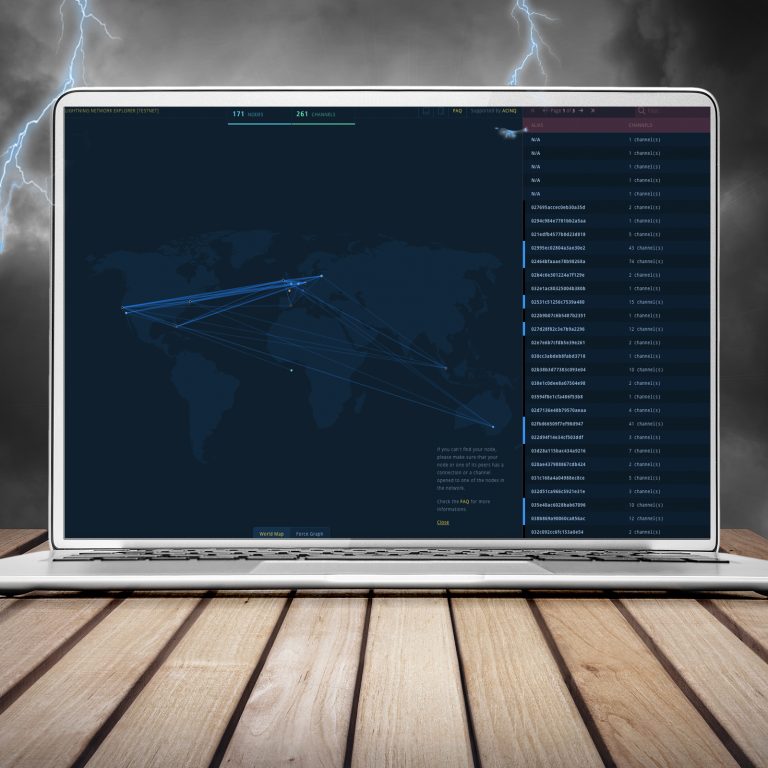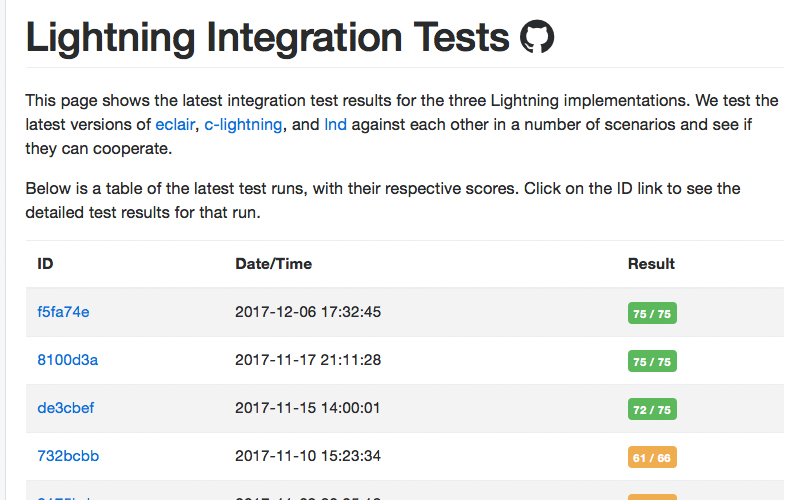Latest news about Bitcoin and all cryptocurrencies. Your daily crypto news habit.

Over the past couple of weeks, the Lightning Network has been a topical discussion. Now, this week, a few developers building Lightning implementations from a few different projects have released information on the protocol’s current progress.
Also Read: This Bulgarian Business School Offers Bitcoin Scholarships
Lightning Network Passes 72 out of 75 Compatibility Tests
The Lightning Network is a scaling solution that has been worked on and discussed for a few years now. The protocol’s white paper written by, Thaddeus Dryja and Joseph Poon, creates an off-chain system by forming a network of payment channels. The technology takes it a step further because funds are not entrusted to a third party. Essentially the Lightning Network (LN) can theoretically scale bitcoin by allowing thousands of transactions a second without compromising the trustless nature of bitcoin. This year and more recently over the past three months, a lot of people have been building and testing LN projects. For instance, software developer Christian Decker revealed testing results for three Lightning implementations to see if they could cooperate. According to Decker’s findings, 72 out the 75 tests passed.
LN Protocol Interoperability and Making Purchases With Bitcoin’s Mainnet
Additionally, on December 6 the co-founder of Lightning Labs, Olaoluwa Osuntokun (Laolu), demonstrated multi-hop payments utilizing three different LN protocols. The trial was tested on Bitcoin’s mainnet and marked the very first time a multi-hop, cross-implementation payment was made on the live blockchain. Laolu and co-workers used the LN implementations to purchase a coffee and a yalls.org article.
Acinq Launches Lightning Network Explorer
Following the experimentation with Lightning Labs, another LN-based startup called Acinq had also revealed its team’s progress. On December 8 the company launched a Lightning Network explorer which allows users to visualize all the known LN channels and nodes worldwide. Now that developers have figured out that other implementations are interoperable, Acinq’s explorer can find c-lightning nodes, eclair nodes, and lnd nodes. Acinq is pleased its explorer explains a few interesting features associated with the protocol.
“A cool feature of Lightning is that nodes can advertise their own alias and color. In case you find a node with a moniker that seems to come directly from a leaked NSA powerpoint, that’s probably because c-lightning uses a very special codename generator for its alias,” explains Acinq.
 Selecting a node using Acinq’s Lightning Network explorer.
Selecting a node using Acinq’s Lightning Network explorer.
Lightning Network Is Attracting Developers and Testing Participants
Currently, the explorer is built on Bitcoin’s testnet with just a few participants using LN, but the network has been steadily growing says Acinq. The default interface shows nodes that reveal their public IP can be geo-located on a map. Selecting a specific node will show all the channels tethered to the node while also displaying the Uniform Resource Identifier (URI) in plain text.
Transactions cannot be seen like a traditional block explorer tied to the Bitcoin network. This is because LN transactions are not publicly broadcast and are encrypted. The company hopes that more developers will join in on bolstering the Lightning Network’s current projects and available code bases.
What do you think about the Lightning Network progress so far? Let us know what you think in the comments below.
Images via Shutterstock, Github, and Acinq.
Keep track of the bitcoin exchange rate in real-time.
The post Lightning Network’s New Infrastructure and Interoperability appeared first on Bitcoin News.
Disclaimer
The views and opinions expressed in this article are solely those of the authors and do not reflect the views of Bitcoin Insider. Every investment and trading move involves risk - this is especially true for cryptocurrencies given their volatility. We strongly advise our readers to conduct their own research when making a decision.
